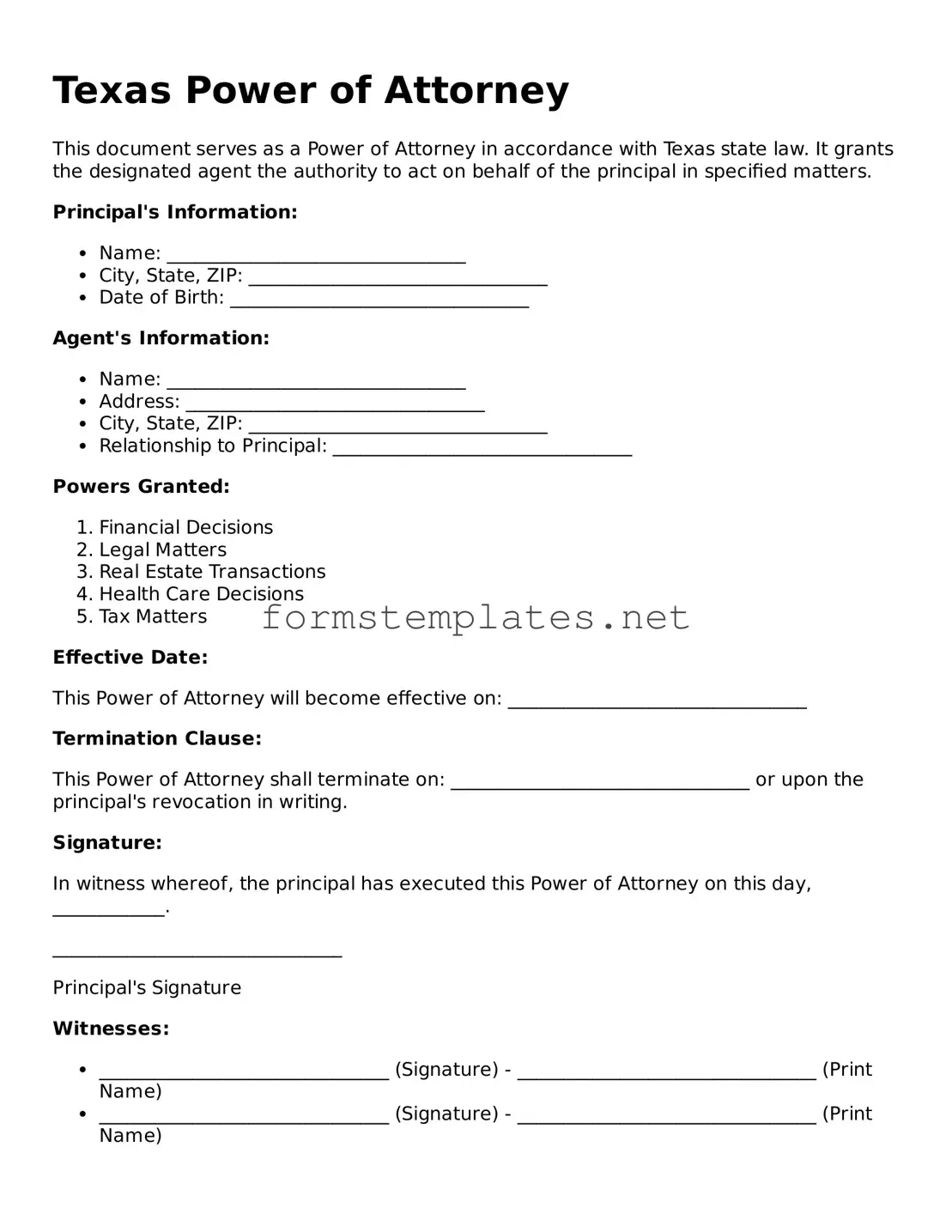Texas Power of Attorney
This document serves as a Power of Attorney in accordance with Texas state law. It grants the designated agent the authority to act on behalf of the principal in specified matters.
Principal's Information:
- Name: ________________________________
- City, State, ZIP: ________________________________
- Date of Birth: ________________________________
Agent's Information:
- Name: ________________________________
- Address: ________________________________
- City, State, ZIP: ________________________________
- Relationship to Principal: ________________________________
Powers Granted:
- Financial Decisions
- Legal Matters
- Real Estate Transactions
- Health Care Decisions
- Tax Matters
Effective Date:
This Power of Attorney will become effective on: ________________________________
Termination Clause:
This Power of Attorney shall terminate on: ________________________________ or upon the principal's revocation in writing.
Signature:
In witness whereof, the principal has executed this Power of Attorney on this day, ____________.
_______________________________
Principal's Signature
Witnesses:
- _______________________________ (Signature) - ________________________________ (Print Name)
- _______________________________ (Signature) - ________________________________ (Print Name)
